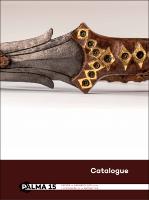Fragmenting the Chieftain – Catalogue
Late Bronze and Early Iron Age elite burials in the Low Countries
Author(s)
van der Vaart-Verschoof, Sasja
Collection
Dutch Research Council (NWO)Language
EnglishAbstract
There is a cluster of Early Iron Age (800–500 BC) elite burials in the Low Countries in which bronze vessels, weaponry, horse-gear and wagons were interred as grave goods. Mostly imports from Central Europe, these objects are found brought together in varying configurations in cremation burials generally known as chieftains’ graves or princely burials. In terms of grave goods they resemble the Fürstengräber of the Hallstatt Culture of Central Europe, with famous Dutch and Belgian examples being the Chieftain’s grave of Oss, the wagon-grave of Wijchen and the elite cemetery of Court-St-Etienne. The majority of the Dutch and Belgian burials were found several decades to several centuries ago and context information tends to be limited. They also tend to be published in Dutch or French or otherwise difficult to access publications. This research went back to the original reports and studied the objects found in these graves in detail. This generated new and evidence-based insights and interpretations into these exceptional burials and allowed for the reconstruction of the individual burial rituals. Fragmenting the Chieftain – Catalogue presents the first comprehensive overview of the Dutch and Belgian elite graves (in English) and the objects they contain. The results of an in-depth and practice-based archaeological analysis of the Dutch and Belgian elite graves and the burial practice through which they were created can be found in Fragmenting the Chieftain. A practice-based study of Early Iron Age Hallstatt C elite burials in the Low Countries.
Keywords
archaeology; prehistory; Early Iron Age; Hallstatt C; elites; burial practice; funerary ritual; Low Countries; Hallstatt Culture; Northwest Europe; social differentiation; barrowsPublisher
Sidestone PressPublisher website
https://www.sidestone.com/Publication date and place
Leiden, 2017Imprint
Sidestone Press DissertationsClassification
Archaeology by period / region
Prehistory


 Download
Download Web Shop
Web Shop